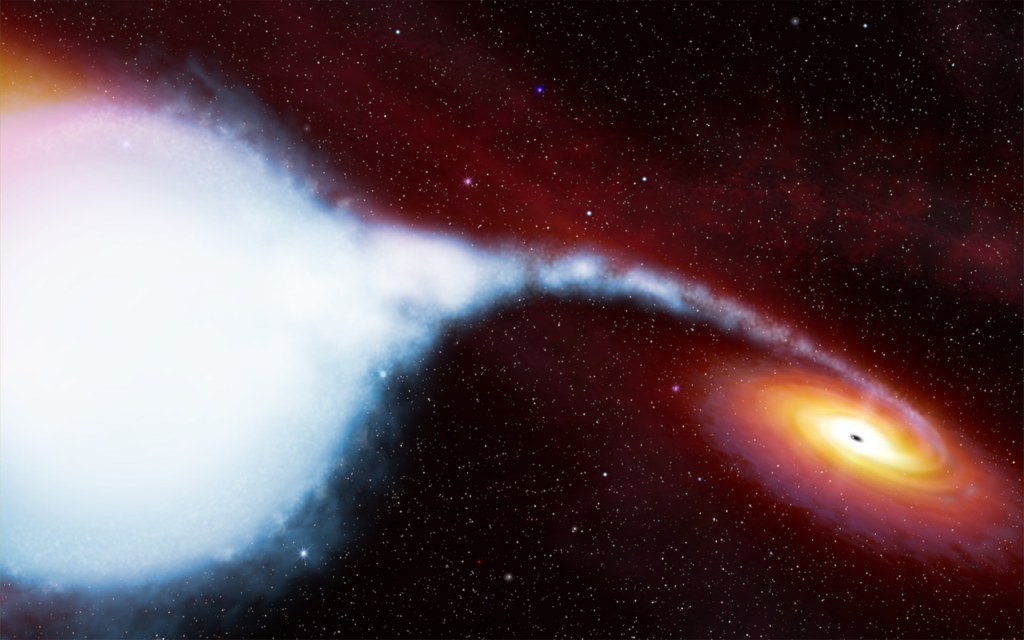NASA has published a visualization showing 22 binary systems, one of the components of which is a stellar-mass black hole.
How to find a Black Hole
Giant stars end their lives with a supernova flare, which may result in the formation of a black hole. If the dead luminary has a companion, the newborn black hole will gradually pull over its matter with the formation of an accretion disk.

The accretion disk is a source of powerful X-ray radiation. Until 2015, when astronomers were able to record gravitational waves caused by the merger of black holes for the first time, the search for X-rays was the main way to detect stellar-mass black holes
The Most Studied Black Holes
The visualization created by NASA is dedicated to the 22 most studied binary systems, one of the components of which is a black hole. They are located in the Milky Way, and its nearest neighbor is the Large Magellanic Cloud.
The video includes such objects as Cygnus X-1 (the system with the first confirmed black hole), MAXI J1659 (the system with the smallest orbital period) and A0620-00 (the system with the closest black hole to Earth). The colors of the stars in the video indicate their temperature. Since accretion disks are much hotter, a different color scheme is used for them.
As for black holes, their sizes are significantly increased for clarity — otherwise they simply would not be noticeable. An example is the Swan X-1. With the mass of a black hole 21 times greater than the solar one, the diameter of its event horizon (an area beyond which nothing can escape, including light) is only 124 km.
You can also read our article about the history of the discovery of quasars — the most distant and brightest black holes in the Universe.
According to https://www.nasa.gov
Follow us on Twitter to get the most interesting space news in time
https://twitter.com/ust_magazine
